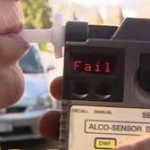Are Our Drink Driving Penalties Tough Enough?
A 42 year old Gold Coast mother was recently charged with drink driving and her licence suspended when she was found to have, what many consider to be “an Australian record,” with an alleged DUI reading of 0.48. A DUI reading that was almost 10 times over the legal limit.
Last month a drink-driver with over four times the limit was found asleep in traffic. He had three children aged one, three and five years old with him in the car at the time he was reported to police. When police arrested him he had an alleged blood alcohol level of 0.22.
And just this month, a woman was charged with drink driving and failing to properly restrain her child when she crashed her car with her 3 month old baby on her lap.
Week after week stories like this are all over the news in Australia. Is drink driving getting worse? Should we have tougher penalties to curb drink driving before more innocent lives are lost?
According to Transport for NSW one in every five crashes in NSW where someone loses their life is due to drink driving. Drink driving is a factor in more than 20 percent of all fatal crashes across NSW and results in the deaths of nearly 100 people every year.
Drinkwise Australia states the higher the blood alcohol concentration (BAC), the higher your risk of being involved in a crash. For example, with a blood alcohol concentration (BAC) of 0.05, the “risk of being involved in a crash doubles,” with a BAC of 0.08, you are “7 times more likely to crash” and “25 times more likely” with a BAC of 0.15. It is a miracle that the woman in the Gold Coast with a DUI of .048 was not involved in a crash with more than three times that.
In NSW it is illegal to drive with more than 0.05 blood alcohol concentration (BAC) in your system and learners and probationary license-holders must have a 0.00 BAC.
What are the penalties for drink driving in NSW?
Penalties for drink driving are determined by many factors including the prescribed concentration of alcohol, whether it is a first or subsequent offence, as well as a person’s general traffic history.
According to Deterrence Theory, a person’s decision whether to partake in an illegal activity is related to how they perceive the possible subsequent punishment. The more swift, certain and severe the penalty or how inconvenient the penalty is to the offender, then the more effective the potential penalty is at deterring the offender from that activity. Penalties aim at either: punishing, reforming or incapacitating the offender.
For example, in February 2015 NSW introduced the Mandatory Alcohol Interlock Program for “drivers convicted of serious and repeat drink driving offences.” If a driver refuses to participate they will be disqualified for holding a licence for five years from the date of conviction. The objective of the interlock device is to incapacitate the offender from driving drunk. Participating in the interlock program may decrease the amount of time someone’s licence is disqualified.
New legislation was also introduced in Victoria last June to combat high range drink-drivers. A first-time offender who blows 0.10 (twice the legal blood alcohol limit) could see his or her car impounded, licence cancelled, and be disqualified from driving; as well as face fines of more than $600 (Source: Victoria Legal Aid).
Will taking away someone’s vehicle reduce the number of drink driver’s on Australia’s roads?
Everyone agrees that we need to get drink drivers off Australian streets. However, critics like Rebecca Ivers, director of the injury division at The George Institute for Global Health, say “impounding cars wouldn’t solve the problem of drink-driving in the long term” (Source: News.com.au). Although vehicle impoundment may show some success at reducing repeat drink driving offenders, it is not necessarily an effective long term deterrent for drink driving in general.
Critics say we need to have a multi-pronged approach to drink driving from vehicle and licensing related sanctions, sobriety check points with breath analysis to rehabilitation programs such as TOIP; as well as community preventive services like ignition interlock devices and mass public education campaigns if we really want to reduce the number of drink driving offences on our roads.
If you have been charged with a drink driving offence, there are number of penalties the court can impose on you. Whether you are given a fine, a prison sentence, a good behaviour bond, or a no conviction recorded (Section 10) depends on a wide number of variables.
A good criminal lawyer can help navigate all of that for you.







